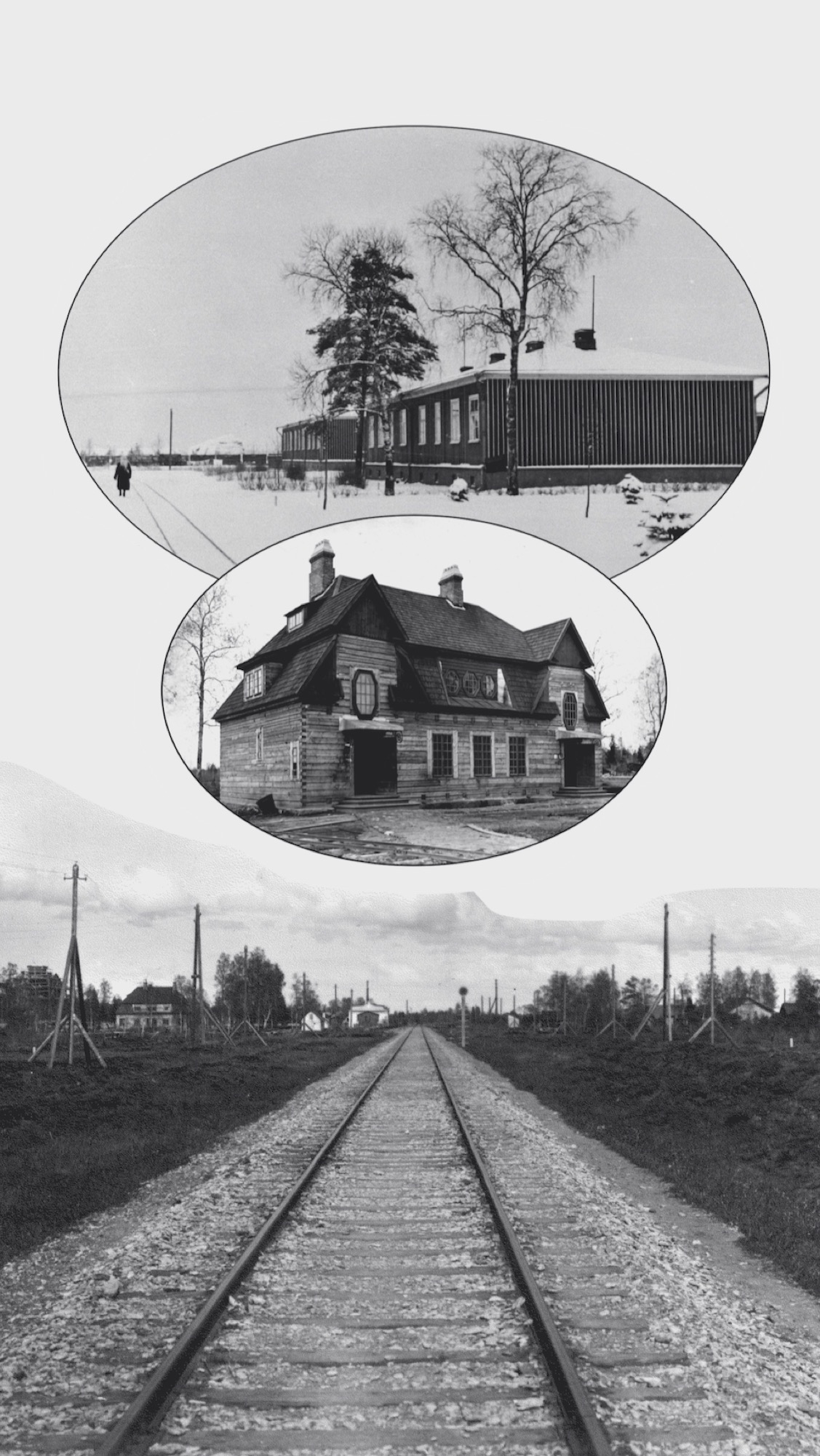Settlement

The Ellamaa power station is located in Turba township. The oldest building in Turba can be considered the so-called “white barracks” located at the railway station. It is a one-story stone house that was built for the workers of the Tallinn-Haapsalu railway just before World War I. However, the establishment of the peat industry and the Ellamaa power plant around a decade later was instrumental in the establishment of the Turba township and its rather rapid growth in the 1920s and 30s.
The first structure to be built in the area between the railway line and the future power station was the station’s office building (1922). Soon, the residences for the management and employees of the power plant were also completed near the power station. Several peat workers’ residences were built south of the railroad, some of which were for year-round and others for only summer use. Most of the early buildings were designed by the architect Alexandr Wladovsky. As of the late 1920s, the buildings related to the power station and peat industry were being designed by other designers.
The power station was built of stone, but almost all the other houses in Turba were built of wood. This was both cheaper and faster, but the quality suffered. The office building of the power station, the residences of the management, officials and some of the workers had a simple, yet aesthetic finish, i.e. vertical planks covered with slats. The railway station building completed in 1924 has similar architecture and was probably designed by Leon Johanson, a civil engineer working for the Railway Administration. It is interesting to note that the railway station was initially called Sooniste, and it was only 1934 that it called Turba. Thereafter, the settlement also adopted the same name. Similarly to the railway station, the Turba Culture House (1936) was also built of wood, and still serves its original purpose today.
As a contrast to the monumental stone power station, the 1920s wooden architecture and mature greenery create a cosy, even romantic, milieu that also charms Turba’s guests – especially those arriving by train. In addition to the main building of the power plant, the other older buildings that have been nicely renovated include the office building of the power station, which is occupied by the Nissi Trollid Music School, as well as the train station building, which has been renovated into a dentist’s office.
Illustrations:
Peat workers’ residences in the 1930s. Photo by Nylander-Eggert. National Archives of Estonia
The office building designed by architect Aleksandr Wladovsky before the wooden siding was installed, 1922. MOMU Motorsports Museum
The railroad is an integral part of Turba’s identity. Entry into the settlement in 1923. MOMU Motorsports Museum